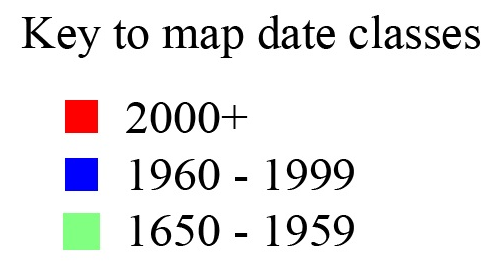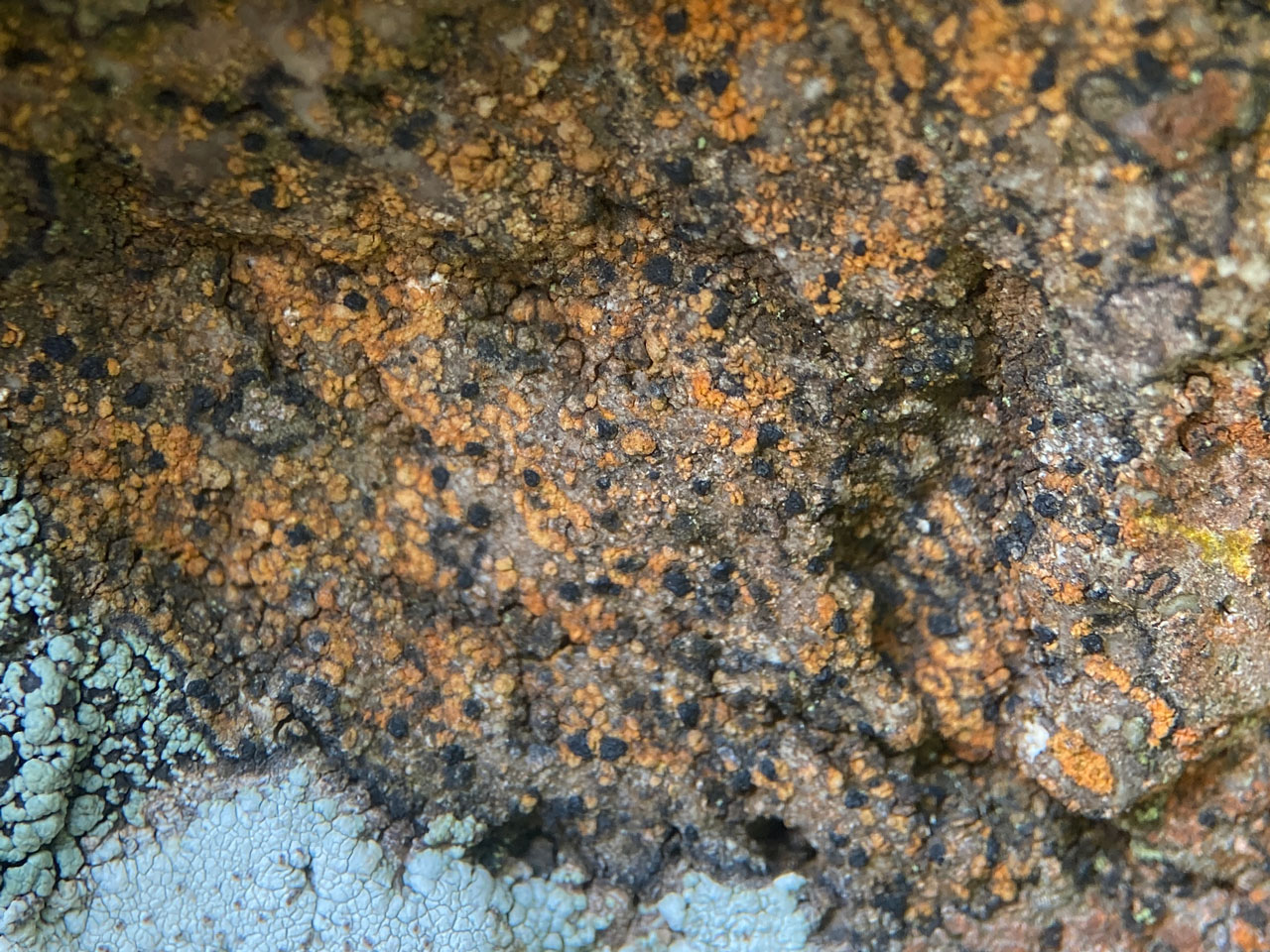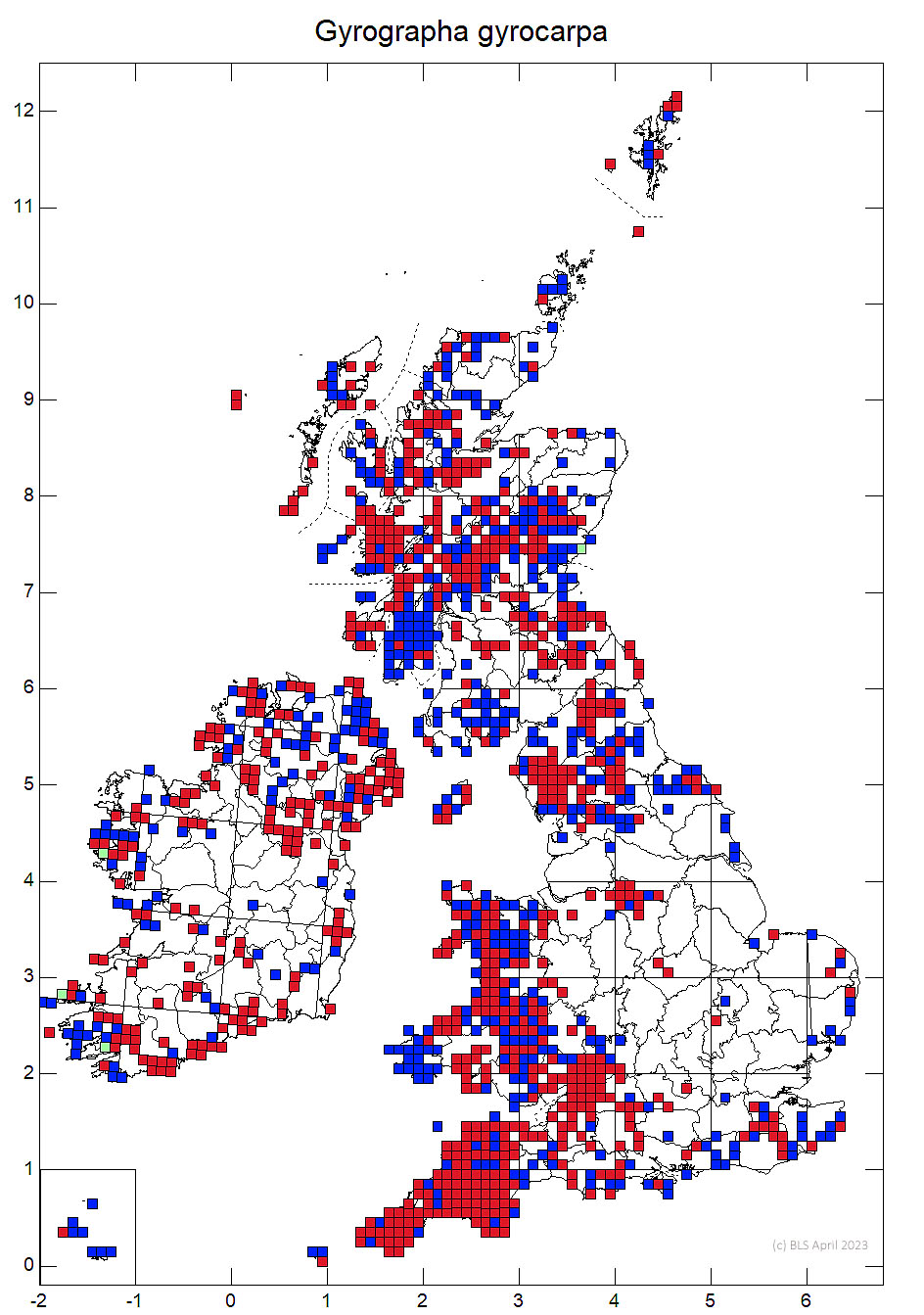A distinctive lichen with a chocolate-brown thallus, with ochraceous soralia which are C+ red, found on humid, often vertical or overhanging, shaded siliceous rock faces. Common in the uplands, where it is typically found with G. saxigena, which lacks soralia and Enterographa zonata, which has dark brown soralia which become ± lilac-white when abraded.
Thallus thin to medium, effuse or finely rimose-cracked, often forming extensive mosaics, pale tan to deep chocolate-brown, sometimes with paler, pinkish areas; prothallus dark, delimiting or absent; soralia 0.4–1.5 (–2.5) mm diam., scattered, often
in patches or becoming confluent, dull yellow-grey, ochraceous, rarely brown, fading to pale buff-grey in dried collections. Apothecia occasional, 0.7–1.6 (–2) mm across, knot-like or clustered-gyrose, rounded, sessile, scattered, rarely crowded and contiguous, disc a persistent slit; exciple and hypothecium K+ olive-green; epithecium pale; hymenium 80–120 µm tall, I–. Ascospores (12–) 17–25 (–30) × (3–) 4–6 µm, slightly clavate, 3-septate, straight. Conidia 3.8–6 × 0.5–0.7 µm, bacilliform. Soralia C+ red, K–, KC+ red, Pd–, UV+ glaucous or pale yellow (gyrophoric, schizopeltic acids, unidentified xanthone and accessory substances).
Gyrographa gyrocarpa can be confused with Clathroporinopsis nidarosiensis (Belonia nidarosiensis) which has soralia which are C– and is mainly restricted to limestone rocks, cement and mortar. G. gyrocarpa is often associated with G. saxigena which lacks soredia and is usually well fertile, and Enterographa zonata which has ± punctiform, dark brown soralia which become ± lilac-white when abraded and are C– and K/UV+ mauve (confluentic acid and related substances). Specimens of G. gyrocarpa on bark should be compared with Thelopsis corticola in which the soralia are C– (without gyrophoric acid).
On humid, often vertical or overhanging, shaded neutral or siliceous rock faces, especially in old woodlands, often on old dry-stone walls; scarce on deciduous or conifer bark and Ilex.

Widespread in W. and N. Britain, scarce but scattered in S.E. England, absent from the central plain in Ireland.
Cannon, P., Aptroot, A., Coppins, B., Ertz, D., Sanderson, N., Simkin, J. & Wolseley, P. (2023). Arthoniales: Roccellaceae [revision 1], including the genera Cresponea, Dendrographa, Dirina, Enterographa, Gyrographa, Lecanactis, Ocellomma, Pseudoschismatomma, Psoronactis, Roccella, Schismatomma and Syncesia. Revisions of British and Irish Lichens 32: 1-22.
Text by Neil A Sanderson based on Cannon et al (2023)


